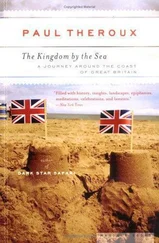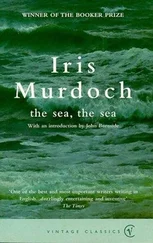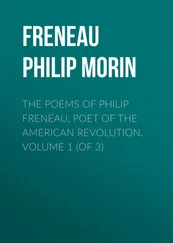But then, this is a city of the sea, built on reclaimed land; even its railway station platform is composed of cement and shingle embedded with shells. Meanwhile those same ships bring back invasive species on befouled hulls or in their ballast, Japanese seaweeds and Manila clams; to marine biologists, this is probably the most ‘alien’ estuary in Britain, with new organisms arriving every year.
In the nearby National Oceanographic Centre – an oddly industrial-looking complex itself, mounted with telecommunication masts, and flanked by long refrigerated sheds that contain sample cores of the earth’s archival depths, every three metres representing one hundred million years – I study the Admiralty Navigation Charts of these commercial waters. Pulling great plasticised sheets from chest-high cabinets, I pore over maps that have turned the world around to show the importance of the sea to the land, rather than the other way about. Atlases display the waters around our coast as blank blue expanses, but here all the contours and depths are laid out, along with their utility to men and women at sea.
The shore from which I swim, for instance, is labelled, unappealingly, ‘East Mud’. Nearby is a ‘Swinging Ground’, along with a ‘Hovercraft Testing Area’ and ‘M.O.D. Moorings’. Buildings, houses and roads have vanished, to be replaced by sites selected only for their relevance to the sea. Church spires and ‘Tall Buildings’ become landmarks, identified by bald details: ‘House (red roof)’. Through Southampton Water and into the Solent and the Channel beyond, a martial arena is mapped out: from the benign ‘Dolphin Bank’ to the treacherous shallows of ‘The Shingles’; from ‘Radar Scanning’ and ‘Foul Area’ to ‘Firing Practice Area’, ‘Submarine Exercise Area’, ‘Explosives Dumping Area’, and ‘US Base’; the reverberations of seismic global conflict brought to placid inshore waters. They are designated training grounds for the closed installations scattered along this coast, like the military port at Marchwood, busy sending ships laden with materiel to foreign wars and bringing back the broken remains. After the Falklands war, the bodies of eighty men were stored in its cargo shed.
One afternoon, after sitting on the sea wall watching the birds, I was about to ride home when I saw a strange shape moving down the water. It sat low on the surface, matt black, absorbing the light around it. Escorted by three tugs, the nuclear submarine – HMS Tireless , a ‘hunter-killer’ here on a ‘friendly visit’ – glided slowly south, powered by invisible force. I could see figures on its conning tower, and others walking the length of the vessel. They looked precarious to me, moving down its rounded back with no restraining railings to stop them rolling off; they might as well have been strolling on the back of a whale. As I watched, two of the crew reached its high tail fin and from the vessel’s stern pulled out a white flagpole that stood there, as though it were a parade ground. It was being prepared for its descent.
Soon, somewhere off the Isle of Wight, it would submerge into the English Channel, and travel six thousand miles beneath the surface of the Atlantic to the Falklands. Nuclear submarines are so efficient that they can stay below for three years or more. In Scotland, a taxi driver told us how he’d worked in Faslane, at the submarine base. He said that the submariners’ mail was habitually screened for any possible bad news from their families which might cause them upset. Even if their loved ones had died, there would be nothing they could do about it – there’d be no return to shore.
The driver spoke in a matter-of-fact manner of men going mad at sea, losing their sanity in the confines of a metal tube where they might not even have their own bunks, but be forced to share beds in sequence with their mates. He said one man had appeared in his civilian clothes, carrying a bag, saying he was ready to go home now.
One morning I arrive at the beach to an extraordinary sight, so unexpected it causes me to screech on my brakes. The water has disappeared, to be replaced by mud flats. It’s as though the plug has been pulled on the estuary, and an entirely new landscape has appeared. In the extreme spring tide, the channel has been reduced to its absolute minimum, so narrow you might almost stroll across to the forest.
Posts rise out of the mud like dead men’s fingers, ready to pull me down as I try, unsuccessfully, to walk out to this new world. The birds have it all to themselves. Even the crows have turned their backs on the human world in which they scavenge and are off in the distance, bathing with the waders.
The tide itself is weather. The weak sun tries to burn off the mist, but it only gets colder. There are astonishing effects in the sky, reflecting the sealessness below. It’s like being in an eclipse. Perhaps the river Solent is about to return to its antediluvian state, or perhaps this is the precursor of a freak tsunami. Or maybe the sea has relocated to the sky, as it was once thought there was another ocean over our heads. One medieval chronicler related how a congregation came out of church to find an anchor snagged on a gravestone. Its line ran taut to the clouds, from which a man descended, only to be suffocated by the dense air as if he were drowning.
Huge yellow buoys which normally float from chains that anchor them to the sea bed lie slumped like giant beach balls, left behind after a day’s play. At the dockhead, ships’ flanks are indecently exposed, as though someone were looking up their skirts; unsupported by the water, they might fall over at any moment. But the withdrawal must stop at some point. Soon normality will resume, and the earth and the moon will go on turning, tugging the sea between them. Some days, in late autumn, the fog is so thick that the sea and sky merge into one. There may be hundreds of birds around me, but I only hear their squawks and peeps. Unseen ships moan like lost whales.
Winter closes in, sweeping the mist away with Arctic winds. The air is so cold it seems to crack the tarmac. My fingers turn raw and crab-like; the colour of summer has long since faded, leaving brown islands on the back of my hands. It’s time to start wearing two hats, as well as two pairs of gloves. Shoulders hunched, I push my bike along the beach, knowing full well that the water will be even colder. At this nadir of the year, people ponder the wisdom, or not, of getting out of their cars. For me it’s all a question of getting in.
I stand over the water, and wonder why anyone would want to enter it. The surface is pressed flat by the cold. Slow and viscous, it wrinkles like setting jam. An oily sheen spreads over it. Rafts of usually active herring gulls float as if frozen into place. Everything has slowed to a glacial pace. Later the sea will ice up at the tideline, like the salt around the rim of a good margarita. In the summer, the water expands with the warmth; now it physically shrinks with the cold. Checking the coast is clear, I pull off my boots and my clothes and wade in without thinking.
I push through the waves with ice-cold hands. From above, I must look like a clockwork frog. My animal heat retreats with each forward stroke; I reach out as if to warm up the water. In summer, my body settles in comfortably; now everything is taut, demanding the conservation of its core.
I line up to the distant markers where cormorants perch. I’ve reached my limit. I turn back to the beach, scrabbling like a goose to find my depth once more. Naked on the sea wall, I give a little dance, singing to myself. If ‘ecstasy’ means to stand outside yourself, then I feel happier than I have ever been. Everything stripped away; everything renewed. Just me and the sea.
In the wan light the sun is diluted and dumbed. I struggle to put on my clothes, shivering as if the whole world were shaking, rather than me. My feet leave suspended puddles on the concrete, each toeprint in three dimensions. There are red threads from my towel caught in the cracks from earlier visits. I tug on my socks. Back home, I’ll shake out the sand and weed as evidence of my folly.
Читать дальше












